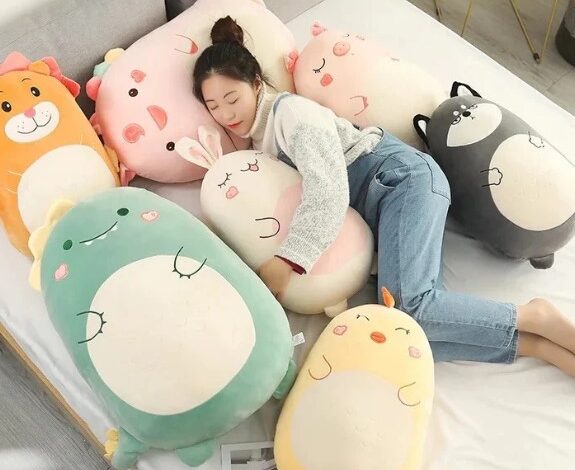Unraveling the Kawaii Aesthetic: More Than Just Cute

Kawaii culture, originating in Japan, has become a global phenomenon that transcends mere cuteness to embody a unique aesthetic and lifestyle. At the heart of this vibrant culture are kawaii shops, where plushies, like the charming rose bear, captivate hearts and evoke feelings of joy and nostalgia. However, the kawaii aesthetic is more than just an eye-catching trend; it represents deeper meanings and connections that resonate with individuals across various backgrounds. This article delves into the essence of kawaii culture, exploring its origins, significance, and the emotional connections fostered by plushies.
The Origins of Kawaii Culture
A Historical Perspective
Kawaii culture began to take shape in Japan during the 1970s, emerging as a response to societal pressures and the rapidly changing landscape of urban life. The rise of kawaii coincided with Japan’s economic boom, where the traditional values of seriousness and professionalism began to clash with a newfound desire for self-expression and individuality. The term “kawaii,” meaning “cute” or “adorable,” became a way for individuals to explore their identities through playful aesthetics.
The Evolution of Kawaii
Over the decades, kawaii culture evolved from being a niche phenomenon to a mainstream cultural force. Iconic characters such as Hello Kitty and Pokémon brought kawaii into the global spotlight, influencing fashion, design, and even food. The visual language of kawaii—characterized by bright colors, exaggerated features, and whimsical designs—began to permeate various aspects of everyday life, encouraging people to embrace cuteness in their surroundings.
The Kawaii Aesthetic
Characteristics of Kawaii Design
The kawaii aesthetic is defined by its playful and cheerful attributes. Bright pastel colors, rounded shapes, and charming facial expressions are hallmarks of kawaii design. This aesthetic is not only visually appealing but also invokes feelings of happiness, innocence, and comfort.
Kawaii elements can be found in various forms, including fashion, stationery, home decor, and, of course, plushies. The versatility of the kawaii aesthetic allows it to adapt to different contexts while maintaining its core principles of cuteness and joy.
The Role of Plushies in Kawaii Culture
Plushies serve as quintessential representations of the kawaii aesthetic. These soft, huggable toys embody the essence of cuteness, providing comfort and companionship to people of all ages. They come in various shapes, sizes, and characters, appealing to diverse interests and preferences.
One of the standout plushies in the kawaii realm is the rose bear. This enchanting creation merges the classic teddy bear shape with the elegance of roses, symbolizing love and affection. Rose bears have become popular gifts, particularly on special occasions, as they combine the whimsy of plush toys with the heartfelt sentiment of flowers.
The Emotional Connection to Kawaii
A Source of Comfort
Plushies, including rose bears, have an innate ability to provide emotional support and comfort. For many, cuddling a plush companion can evoke feelings of safety and warmth, acting as a soothing balm during stressful times. The act of hugging a plushie can release oxytocin, the hormone associated with bonding and emotional regulation, creating a sense of calm and security.
Nostalgia and Memory
For adults, plushies often evoke nostalgic memories of childhood. The connection to simpler times can be a powerful source of comfort, allowing individuals to revisit cherished moments and emotions. The rose bear, with its blend of cuteness and romantic symbolism, can also evoke memories of love and connection, making it a meaningful gift for loved ones.
Fostering Imagination and Creativity
Kawaii culture encourages imaginative play and creativity. Plushies inspire storytelling, role-playing, and artistic expression, particularly among children. By engaging with their plush companions, children develop social skills and emotional intelligence, learning to navigate their feelings and build connections with others.
The Community Aspect of Kawaii Shops
Creating a Sense of Belonging
Kawaii shops serve as more than just retail spaces; they are vibrant communities where like-minded individuals come together to celebrate their love for cuteness. These shops often host events, workshops, and gatherings that foster connections among customers.
The atmosphere in kawaii shops is warm and welcoming, allowing visitors to share their passion for kawaii culture, exchange ideas, and showcase their creativity. The sense of belonging cultivated in these spaces is an essential aspect of the kawaii experience, making individuals feel part of a larger movement.
Engaging with Kawaii Culture Online
Social media has played a pivotal role in the expansion of kawaii culture and its community. Platforms like Instagram, TikTok, and Pinterest are flooded with kawaii-themed content, from photos of plushies to DIY crafts and fashion inspirations. Kawaii shop often utilize these platforms to showcase their products and connect with their audience, creating a global network of kawaii enthusiasts.
The online community provides a space for fans to share their collections, celebrate new releases, and engage in discussions about kawaii culture. This digital engagement enhances the overall experience, allowing individuals to feel connected to a broader community that shares their interests.
Sustainability in Kawaii Culture
The Shift Towards Eco-Friendly Practices
As awareness of environmental issues grows, many kawaii shops are taking steps to adopt sustainable practices. This includes sourcing eco-friendly materials for plushies, minimizing waste in production, and offering reusable packaging options. By prioritizing sustainability, these shops contribute to the movement towards more conscious consumerism while maintaining the kawaii aesthetic.
Supporting Local Artisans
Many kawaii shops collaborate with local artisans and creators to showcase unique and handmade products. This not only supports local economies but also adds an element of authenticity to the kawaii experience. By promoting local talent, these shops create a sense of community and connection that resonates with customers seeking one-of-a-kind items.
Read also: How Silicone Baby Dolls Can Help with Therapeutic and Emotional Needs
The Future of Kawaii Culture
Expanding Horizons
As kawaii culture continues to evolve, the aesthetic is expanding beyond its traditional roots. New interpretations and styles are emerging, incorporating diverse cultural influences and contemporary design trends. This evolution ensures that kawaii culture remains relevant and appealing to future generations.
Integrating Technology
The integration of technology into kawaii shops and products is another exciting trend. From augmented reality experiences that enhance the shopping experience to interactive apps that allow users to customize their plushies, technology is creating new opportunities for engagement and creativity within the kawaii community.
Conclusion: More Than Just Cute
Kawaii culture is a vibrant and multifaceted movement that transcends the surface-level appeal of cuteness. It represents a celebration of joy, imagination, and connection, inviting individuals to embrace the whimsical side of life. Plushies, particularly the beloved rose bear, play a significant role in this cultural phenomenon, serving as symbols of love, comfort, and nostalgia.
As kawaii shops continue to thrive and evolve, they will remain essential spaces for fostering creativity, community, and emotional connections. The allure of the kawaii aesthetic is undeniable, inviting us all to find joy in the little things and celebrate the beauty of cuteness in our everyday lives. Embracing kawaii culture means more than just enjoying cute products; it’s about connecting with a shared sense of joy, love, and creativity that enriches our lives and nurtures our souls.
4o mini



